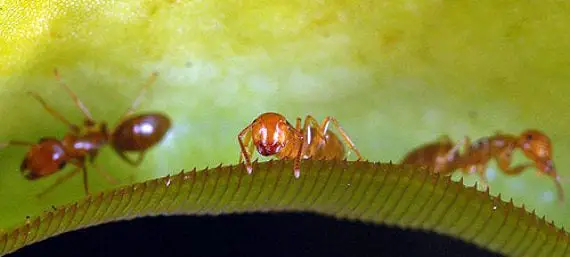
Normally when we talk about carnivorous plants We come to the image of a plant that needs to hunt insects to survive in a land with hardly any nutrients.
However, in the tropical forests of the world, there are some that have a different behavior than usual with what should be their prey.
One of them is the Nepenthes bicalcarataoriginally from Borneo. Maintains a relationship with a type of ant native to the place, whose scientific name is Camponotus schmitzi. They have established a symbiotic relationship; both parties benefit from the other.
Recent studies show that it is a relationship that consists of the ant is in charge of keeping the trap cleanentering, and even diving in the traps, and the Nepenthes is left with the residues of the insects, in addition to being able to hunt more often.

The Nepenthes rafflesiana variety elongataalso originally from Borneo, has partially delegated the task of obtaining prey indirectly thanks to a species of bat, which deposits its residues inside the carnivore’s traps, and the plant feeds on said residues.
Unlike other Nepenthes, the traps of N. rafflesiana v. elongata, have fewer digestive juices and radiate less ultraviolet light. Therefore, there are fewer insects that it attracts. Specifically, they fall seven times less than in other Nepenthes. Therefore, it needs to maintain the symbiotic relationship, in order to survive.

The carnivorous plant roridulaoriginally from South Africa, has established a symbiotic relationship with a so-called ‘assassin bug’, whose scientific name is Pameridea roridulae. Its leaves have sticky hairs, but it cannot ingest the insects it catches directly.
The ‘assassin bug’ feeds on the insects that the plant catches. The plant feeds on the waste of dead insects that have eaten the pameridea. And so both get benefits from the other.
Image – neofrontera, Live Science, Plant Carnivore
More information – Types of traps of carnivorous plants

